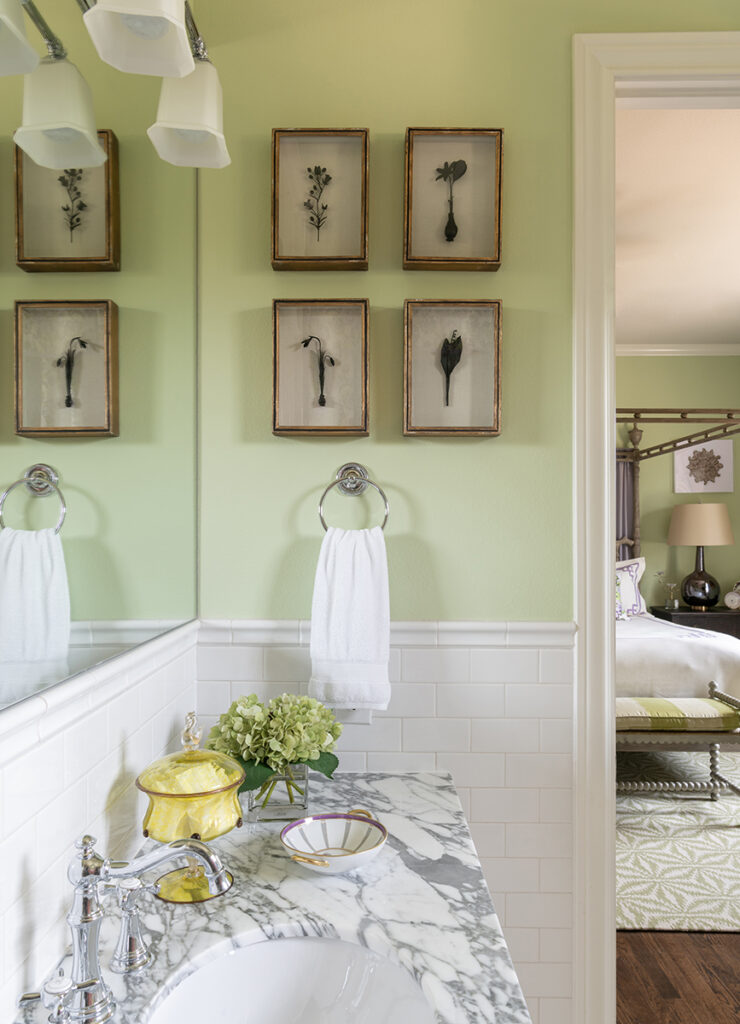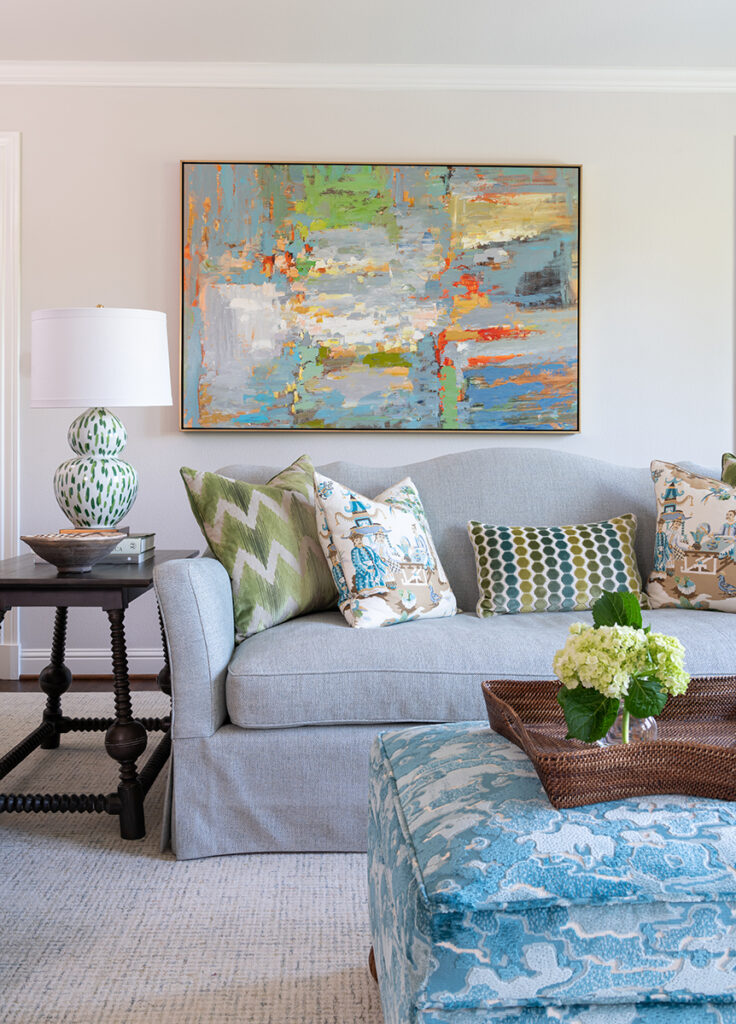Make The Most of Art: Designer Tips for Displaying a Collection
Have you ever purchased a piece of artwork and then weren’t sure how to display it when you got home?
Art is subjective, and there are no hard rules for displaying it. That said, I do have guidelines for displaying art that I like to share with my interior design clients. Here are some of my top tips for hanging your paintings, photography, masks, plates, textiles, or wood carvings:
Most artwork should be hung at eye level, around 60 inches above the floor. On the other hand, if you’re hanging art in your dining room, you may want to display it a touch above the eye level of seated diners. Extra tall artwork should be hung about 15 inches off the floor.
While a large painting or photo can bring drama to a room, a series of small prints has its own charm, inviting the viewer to step closer. Small, standalone works of art can be a delightful surprise when displayed in unexpected places, such as bathroom vanities, kitchen shelves, and windowsills.


When you hang multiple pieces of art together, try to keep them at least 2 inches apart. If you want to display a collection over a piece of furniture (like a couch), there’s no need to space them across the entire width of the furniture. Instead, center the whole collection in a tight grouping. You can help blend your artwork into the room by picking up accent colors in the painting and pairing them with accessories of a similar color.
Traditional frames are best for classical subjects like landscapes and portraits. On the other hand, modern art and photography usually call for frames with clean lines. Large photos often look their best when mounted in plexiglass or acrylic. Small dimensional pieces will also look great in plexiglass display boxes, which give them a “gallery” feel. Another thing to keep in mind is that artwork and photos on paper will fade in direct sunlight, so in rooms with lots of natural light, protect those pieces in plexiglass or UV glass.
When you live with art, you want to show it off to its best potential. Hopefully, these guidelines can help you pick out the perfect places for all your prized collections.









